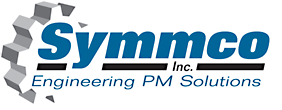
PM PROCESS
Pm process video

Traditional casting and machining methods involve costly, significant machining operations that waste both resources and energy. PM alleviates that problem by combining a variety of raw materials specifically configured by an engineer to control mechanical and magnetic properties. During the process, the powder metal is compacted in a die then sintered at high temperatures in a controlled atmosphere to form a solid. It is especially useful in making parts that have irregular curves or recesses.
Blending
The part-specific powder is created by mixing the correct amounts of metals and lubricants to produce the physical and mechanical properties of the finished product.
Molding
During the molding process, the powder is compacted into the desired shape using compressive forces. The part shape is created by compressing the correct blend of materials inside of the part-specific tools. At this stage, the part is considered “green” and is breakable until sintered.
Sintering
Through the application of heat, sintering permanently bonds the individual metal particles that have been compacted together through the molding stage. This process is instrumental in providing the majority of the mechanical properties of the final product. Sintering temperatures are typically in excess of 2050° F for iron-based materials.
Sizing
Sizing, sometimes referred to as "coining," is the final pressing of the fully sintered part. This process is most often completed on bearings to achieve the final specifications on each individual part, as well as to maintain consistency across the entire lot. Not only does this operation ensure bearing quality, but it qualifies the final part for density, open porosity and mechanical strength.
Oil Impregnation
Under vacuum, customer-specific oil products are impregnated into the remaining porosity of the completed part. This process not only prohibits rust, but more importantly, assists in meeting the lubrication requirements of the completed product.

Why PM?
-
Enable single-supplier transactions
-
Save time & money
-
Prevent unnecessary waste
-
Provide cost-effective alternatives
-
Offer materials options
-
Accommodate the creation of assemblies
-
Minimize supplier requirements
-
Ensure greater quality assurance

